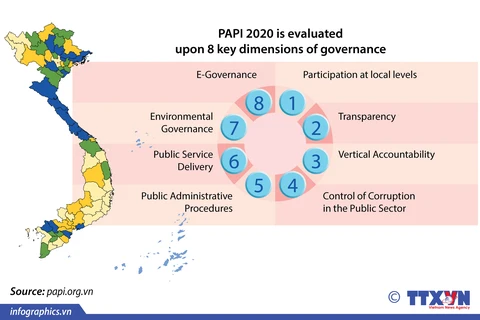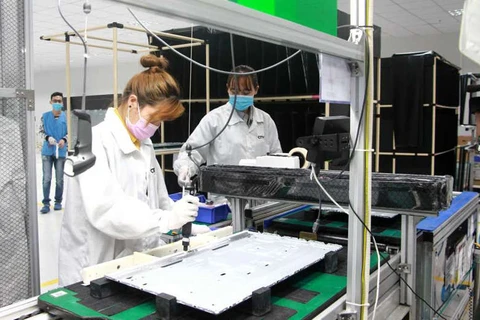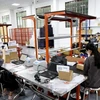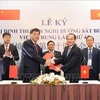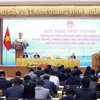 Lorries carry goods from the inland container depot in Mong Cai city of Quang Ninh province (Photo: VNA)
Lorries carry goods from the inland container depot in Mong Cai city of Quang Ninh province (Photo: VNA) At a recent meeting with a delegation from the Ministry of Industry and Trade (MoIT), Secretary of the Quang Ninh Provincial Party Committee Nguyen Xuan Ky said the province has identified industrial development as a task of leading importance that helps guarantee national energy security. It is also working to boost economic development based on science and technology so secure cleaner production.
Open-cast coal mines will be gradually shut down while stone mines and cement factories located near Ha Long Bay, a world natural heritage site, will also be closed.
Paying special attention to trade and services, Quang Ninh is moving to capitalise on the local airport, expressways, seaports, and international border gates to foster cross-border trading, Ky said.
He added that apart from the State-invested border gates, many businesses have poured money into developing bonded warehouses and temporary cross-border bridges, thus attracting a large number of enterprises to export and import activities.
Dien affirmed the MoIT’s support for the province’s viewpoint of green and sustainable development based on natural resources, humans, and culture.
Highlighting six tasks for Quang Ninh in the time ahead, he recommended that firstly, the province should build an industrial and trade development strategy which needs to base on the local potential and advantages, Vietnam’s development trend, and especially the national strategies.
During the current and following tenures, it should work hard to develop the industries that serve as the foundation for national industrialisation and modernisation.
The second task is to accelerate the making and submission of the provincial planning for approval, Dien said, noting that this planning must match the sectoral, regional, and national planning schemes.
Thirdly, Quang Ninh needs to promptly seek competent agencies’ permission to develop infrastructure in border economic zones in Mong Cai city, form a wholesale farm produce market in the vicinity of the inland container depot, build a night market in the Bac Luan 1 area, develop tourism and maritime services in Tra Co ward and Cape Sa Vi of the city. Besides, urban development must match the population, industrial, and service growth.
Fourthly, Dien recommended the province to further use capital sourced from the State budget to attract private investment to building socio-economic infrastructure. It should also continue applying the new governance methods it has experienced in such as public investment - private governance, and private investment - public governance.
The fifth task is paying attention to the domestic market, which has sometimes been neglected when it comes to agricultural products, he said, adding that when the MoIT adopted the policy of boosting domestic sale of farm produce via traditional markets and supermarkets nationwide, the sales have doubled compared to the previous years.
The minister also underlined the need to continue developing e-commerce and digital economy, facilitate cross-border trading based on importers’ demand and the signed free trade agreements, issue incentives to attract domestic investment, and create a road map for assisting Vietnamese businesses to join production and supply chains.
The last but not least task is related to market surveillance as Quang Ninh boasts long borderlines, both on land and at sea. Its administration need to create favourable conditions for market surveillance units to coordinate with other forces like public security, customs, taxation, and especially, authorities of border localities.
Sharing more than 118km of land border and 191km of sea border with China, Quang Ninh is located at the start of the countries’ “Two Corridors, One Belt” economic cooperation zone, in the Nanning - Singapore Economic Corridor, and the expanded Gulf of Tonkin inter-regional cooperation area within the ASEAN - China Free Trade Area./.
VNA
